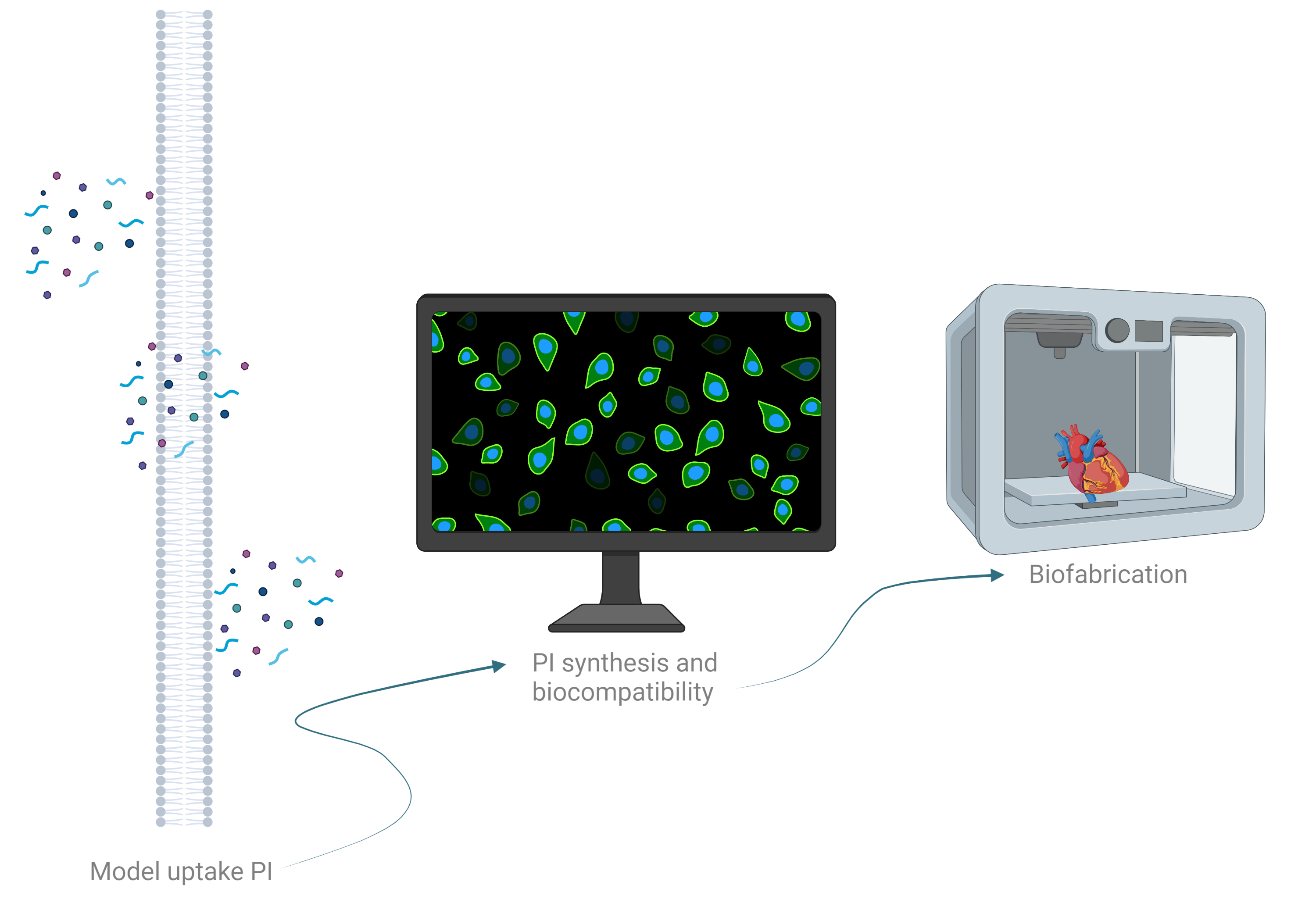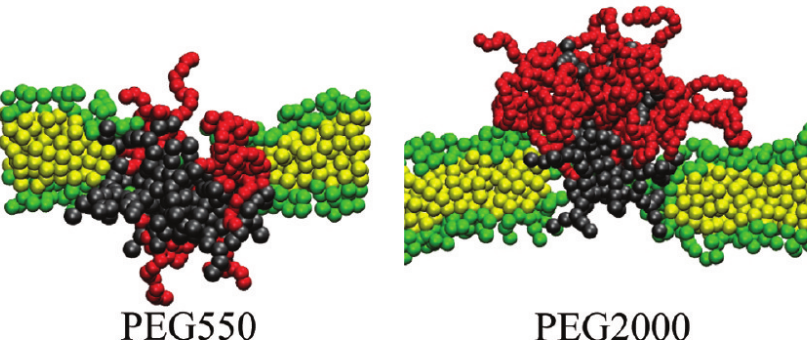Doelstelling:
Development of novel macromolecular photoinitiators by coupling existing small molecule photoinitiators to polymers of different length and composition and screening of their in vitro biocompatibility and performance towards light-induced excitation. In contrast with conventional trial-and-error approaches, modelling will be applied to predict potential cell uptake of the to be developed macromolecular photoinitiators (Figure 1).

Figure 1. Overview project (figure made with Biorender).
Methodology
An important part of the master thesis will include modelling approaches of cell plasma membranes at the molecular scale to investigate how the macromolecular structure affects the permeation. The transmembrane transport will be simulated for macromolecules of various size using advanced molecular dynamics simulations in the high-performance computing (HPC) infrastructure of UGent (with the help of the IBiTech – Biommeda group). A potential candidate to be attached to the photoinitiator is polyethylene glycol (PEG), a biocompatible compound that already has many applications in medical industry (Figure 2). The length of this linear polymer chain can be tailored to test different macromolecular sizes. An adequate interaction model (forcefield) will need to be selected, where coarse-grained forcefields rather than all-atom forcefields have the advantage of being computationally more feasible. The aim is a ranking of the candidates based on the predicted plasma membrane permeability, which will be obtained from free energy simulations and path sampling simulations.
In addition, the most promising macromolecular photoinitiators (PI) based on the modelling outcome, will be synthesized (with the help of a chemist within the Polymer Chemistry & Biomaterials Group), followed by in vitro assays to compare toxicity of small molecule PIs versus macromolecular PIs.
If time permits, the developed macromolecular PIs will be taken further in light-based 3D-printing trials.

Figure 2. Pore formation in the membrane by macromolecule PEG of two different sizes (from Lee&Larson, JPCC, 2011). Coarse-grained representation of dendrimer (grey), PEG (red), and membrane with head groups (green) and phospholipid tails (yellow).
References
[1] J. Groll et al., Biofabrication, vol. 11, 2018.